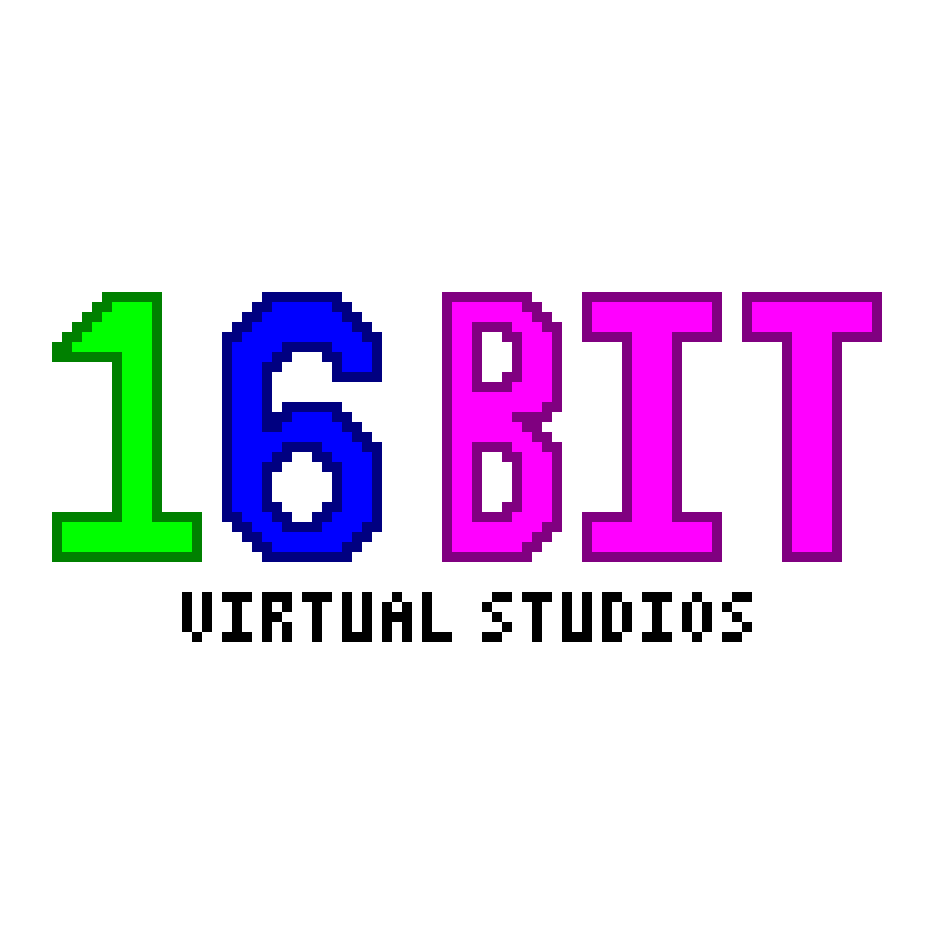Any distro I should use?
Use Linux Mint until you know enough to decide for yourself which other distro fits your use case better.
I’ve been thinking about mint for some time
Thinking of using Linux mint, anything else?
Mint is my favourite beginner distro, can’t really go wrong with it. What’s your main use for your PC (gaming, office, development etc.)? There are some distros that are more well suited for certain tasks.
LMDE is also good, just a different version of Mint. Basically works the same.
I’m currently daily driving LMDE after some time. For OP it probably won’t matter so choosing main line mint might be better.
Linux Mint all the way.
Linux mint
fun fact: my first experience of Linux was actually in Ubuntu (in a emulator ofc), and yes Im thinking of using mint
Also try LMDE (Linux Mint Debian Edition). I think it’s their best flavor actually, but not enough people know about it and usually only try the regular Mint.
oooh I’ll definitely try that first
can recommend mint too after using it for nearly half a year now, without issues
Curious, why not Ubuntu? Doesn’t it have more support forums and generally more popular?
Almost all of those support forms are from way back when Ubuntu was user friendly and community driven. However they are no longer serving the community and shouldn’t be considered user friendly like it was previously.
Anyway almost all of the Ubuntu specific stuff will work on Linux mint as its Ubuntu based.
I recommend first switching Windows-only software to crossplatform software so you won’t have to get used to another operating system and different software at the same time.
For example: LibreOffice, Firefox, etc
Mint is my recommendation, having using it myself for many years now.
If you have a Nvidia GPU, a case could be made for POP! due to the built in drivers, but installing Nvidia drivers is rather painless in Mint.
Then do it? It’s a free operating system – just download whatever distro pleases you, give it a spin, see what happens.
I would but I am pretty worried about my files being lost, plus I’m waiting until I get a better device
From personal experience: if you’re trying to dual-boot with Windows, I recommend using completely separate drives (rather than separate partitions). Windows is very shitty about overwriting your Linux boot partitions when it updates. Having a separate drive isn’t fool-proof, but it helps.
I haven’t needed Windows in >10 years though, so maybe it’s not as shitty about that, but I recommend caution.
I’m on a single ssd dual boot setup with encryption (LUKS for Linux / Bitlocker for Windows) for over 2 years. Never had any problems.
I used this guide back then. Hope it’ll help you op.
I would do this if I knew how to install separate drives, and if my main PC wasn’t a laptop
Maybe invest in an external drive you can copy important files to. Dual booting is usually issue free but it’s always possible to have data loss in general. Data loss, especially data that is personally important to you is a tragedy.
you can install seperate drives on a laptop and dualboot, I know it because I did it before
TELL ME ASAP, I’ll try to find the specs of my laptop, PLEASE TELL ME
Back in the late 1900s, you could open a laptop and remove a hard drive with only a #2 phillips screw driver. So I think they mean that. Physically remove your Windows drive, install a fresh drive, install/play/learn Linux. With your Windows drive disconnected, you can do ANYTHING in Linux without fear of losing any data on that other drive.
Frustrated and just “need to work”? Reverse the process back to the Windows drive.
Feeling a little more confident and want to access your files on the Windows drive? Get a SATA-USB adapter. No need to go all enclosure just yet as that just adds steps when you need the Windows setup.
Comfortable in Linux? Copy your important data over to the Linux system, format the original drive, NOW put it in an enclosure for a handy backup drive.
Feeling confident in your newfound prowess? Connect that external drive to a Raspberry Pi and turn the Pi into a basic NAS, maybe drop a little VPN on it, and now you can access that device/drive from anywhere. At the very least, you now have a place to backup important data in case the laptop falls into a volcano. Hell, now you’ve got a reason to subscribe to SelfHosted & HomeLab.
Reference: 1998-2001 I ran a “dual boot” using removable hard drive bays on a full tower system. As noted above, Windows can sometimes mess up what makes your dual boot possible.
Currently running Mint on an older HP Envy AMD laptop to get back into the Linux swing. Win10 is my daily driver on the desktop from that need of things to work. When you’re fixing other people’s/company’s computers all day, the last thing you want to do is work on your own computer. That and a lack of real gaming support/documentation forever ago is what pushed me back to Windows. The old argument of “Linux is free” wasn’t too heavy a talking point when MS kept giving me free licenses to stick with what I was more comfortable with. Win11 reminds me of Win8, reminds me of WinME, and the cycle of MS dysfunction continues. I want off the ride.
With Gaming as viable as it is on Linux, plus much nicer tools for VMs (AND Docker exists now), I’ve got about year to convert my daily driver desktop (2025 end of Win10).
Oh and I did try to put Arch on that laptop. It was overwritten by Mint as soon as it booted up without a GUI. Now, might of been my fault for using a “base image” or something, but again I need it to just work without spending what limited time I have trying to make it work. But hey, at least folks aren’t trying to get you to install Slackware from 3.5" floppies.
depends onthd laptop mine wasas sjmplle as opening it and puting another ssd inside. tell me what laptop us it
speaking of Linux, I was supposed to upgrade to Linux when I got my new laptop, but forgot about it, sorry!
Yeah, I’m getting sick of these recommend-a-distro threads
Try it with a Live USB stick. And maybe don’t listen to the people recommending Ubuntu. It’s somewhat okay, but they regularly do annoying business decisions that affect their users. I’d rather start with Mint or something.
There are many other websites dedicated to this question:
thats sounds nice, I’ll test it with my Chromebook first (after upgrading my specs ofc)
Why don’t you try becoming comfortable with Linux while using it in a Virtual Machine? I tried different distros too, and then I decided which one was the best for me.
We can’t really suggest you one, if we don’t know what you are going to use it for.
You may want to do some research, because different distros have different purposes (gaming, privacy, programming, easy to use etc etc).
Let us know, what your use cases will be?
guess I’m booting up my VM again!!
https://distrochooser.de/ is a great tool that help to understand what the different distros can do.
Also, you should probably know that selecting a distro is more about selecting the underlying OS and less about the UI (DE). Most distros support the top 5 Desktop Environments (DE for short). And selecting a DE can be just as important.
I’d go for Linux Mint/Fedora Linux.
Another thing, I would’ve play with it first on a VM, like VirtualBox.
I wouldn’t immediately wipe Windows if I were you. I’d do dualboot with Windows.
Then, when you’re ready, stay with dualboot system or go full neckbeard /j
I’m actually thinking of dualboot on windows, gonna mess around to a VM!
You can also run many distros “live” from the install media without installing anything, to get a feel for them and to check that mosts things work (network, sound, movies etc.) You can make a bootable stick and choose the live option when it boots.
For the love of god and all that is holy just use mint cinnamon it’s the easies most stable with little learning curve ever. High performance great for work gaming browsing whatever lol. If you can use windows 7/10 you can use mint cinnamon
I’ll add that to my VM list!
LMDE Mint cinnamon plain old mint Pop OS Ubuntu
Planning to finally boot up my VM after procrastinating, anything else?
I’ve been using Mint for quite a while now on a spare machine and it’s the first linux strain that has me not giving up in frustration. I can definitely recommend.
Mint is the most mentioned choice and an extremely great beginner distro with an huge community.
ZorinOS will get a big update very soon and is also a very good choice. It was my first distro, especially because it looks very modern and pleasing.
If you’re a tiny bit more advanced and get the basics, then you might take a look at the immutable Fedora variants like Silverblue.
They have many advantages compared to traditional distros like the two mentioned above, but atomic Linux is a relatively new concept. I also find them easier to understand and use, and, imo, they’re even more user friendly, but not as refined.
Linux Mint and Pop!_OS are great options
Mint
I would recommend using one of the distros backed by a big company or have very long track records. They are less likely to break on updates, and have a higher chance of supporting any uncommon hardware you may have.
- Fedora
- Ubuntu
- Mint
- Pop OS
If you have new hardware (e.g. GPU newer than 6 months) you will probably have issues. Follow the recommendations from the hardware supplier, or use something arch based. I used Manjaro a while when I got new hardware.
Besides those tips, you should decide which desktop environment you like best. I prefer gnome, as I enjoy to spend time in apps and not on in settings. Others prefer customization. Have a look at https://youtu.be/09cYQJBgKEs?si=KX8FZeMRcMlPTzG2
Here is an alternative Piped link(s):
https://piped.video/09cYQJBgKEs?si=KX8FZeMRcMlPTzG2
Piped is a privacy-respecting open-source alternative frontend to YouTube.
I’m open-source; check me out at GitHub.
From my experience, download many distros from Linux Mint to Zorin, maybe Fedora and OpenSuse if you want something non Ubuntu bases, or Manjaro and Endeavor OS if you are up for a challenge.
Then install them in a Virtual Machine like Virtual Box. This way you can test which OS you like, and see if the software you want works.
In my experience the Desktop Environment makes the biggest impact on your user experience.
Followed by the package manager (app store)
Then available software (steam lutris libre office)
Finally the terminal for when things go south (or you installed arch)
Absolutely!
I started with mint. Hated it.
Ubuntu, Pop_Os. Hated it.
Fedora. Hated it.
Archlinux, okay, but not so much.
Manjaroo, hated it.
And now I settled with Garuda and Nobara. Like them.
I used Nobara for niche gaming (rarely use it now).
And Garuda Linux for dev work, and downloading and installing stuff, including proprietary packages. And I don’t have to configure all the things to make it capable of allowing me to download stuff from all the nice mirrors, such as the community arch mirror.
Nobara, on the other hand, is great at handling compatibility issues kinda out of the box. Such [Edit1: as GPU] drivers.
The reason I disliked the aforementioned distros was solely because of how much involved I had to be to configure them to integrate with my rare WiFi chip drivers, which triggered me when I banged my head at the keyboard for hours only to find out that my WiFi driver was not supported.
But Garuda and Nobara or a blessing, and a chef’s kiss.
That’s coming from a person who tried more than 20+ distros and/or their derivatives.
[Edit2:] All in all, I would recommend what the comment above suggested, as that will help you find your own path. The samurai path, the kenjutsu path, or the kendo path, the peaceful path, or the hackers path. ;)
[Edit3: sorry Debian users, but I DID try your distros, I just didn’t want to bother with them much as they had compatibility issues too !]
I’ve been wanting to do this for years, and tried several years ago but my AMD graphics card didn’t have available drivers. I now have an rtx 2070 super, do you know if it’s compatible?
I saw in a comment above that mint cinnamon is great for gaming, does that use wine or something similar? The gaming aspect is really holding me back.
Also slight concern with my dev environment but I’m sure that’s been solved 100 different ways.
Drivers. I’ve yet to run across any major issues except for Intel Compute not working with Davinci Resolve but that’s well documented.
Now for gaming on Linux. There are 2 ways to game on Linux.
-
Native ports. Most valve games and some third parties (mostly indie) are natively compatible. I’ve had no issues playing these ports and they run like any other application.
-
Windows Compatibility Layer. Now asking for 20+ year old games to be ported to Linux is a bit of an ask. Let alone asking devs to add Linux support to their games when Linux had such a small install base.
So what some very smart devs did, was make 2 pieces of software that makes playing native Windows games on Linux possible.
WINE, or WIne Is Not an Emulator, is a compatibility layer to run native Windows Software in Linux. With a primary focus on Windows System Calls. Gaming in wine isn’t graphically the best.
Then there is DXVK, or Direct X to Vulkan compatibility layer, which translates DX9-DX11 code to the open source Vulkan that runs in Linux. Intel’s Arc graphics uses this for their legacy compatibility.
Now you don’t need to worry about installing any of this since Valve packages these apps, and some choice software like .Net Runtime in a package called Proton. This is a checkbox in Steam and when Steam Play is enabled, the Windows versions of games will be installed and will work.
Compatibility is very good at this point but there are edge cases that still need to be ironed out. Like anti cheat, DRM, and more.
Lutris is another prices of software that can be used like Steam Play but for non steam games. Its also good, but can be fiddly.
Install process is no more involved than actual Windows, but when a Ubisoft game crashes it won’t take your entire machine down with it.
-













